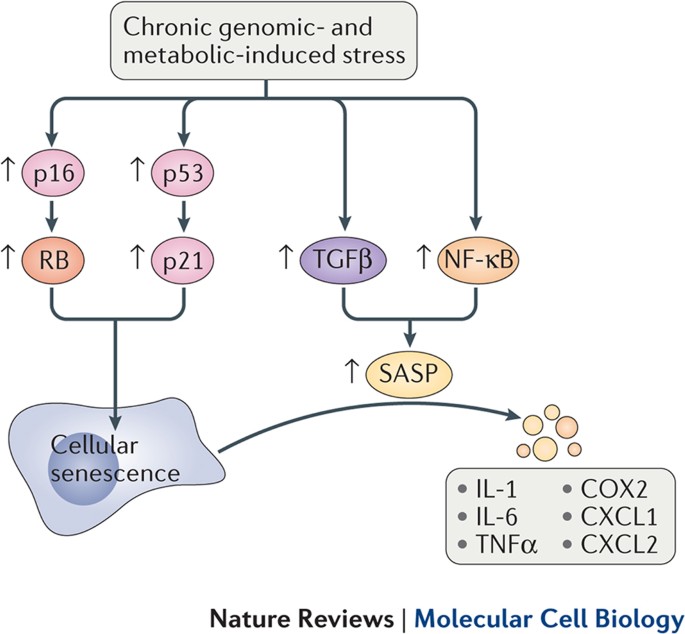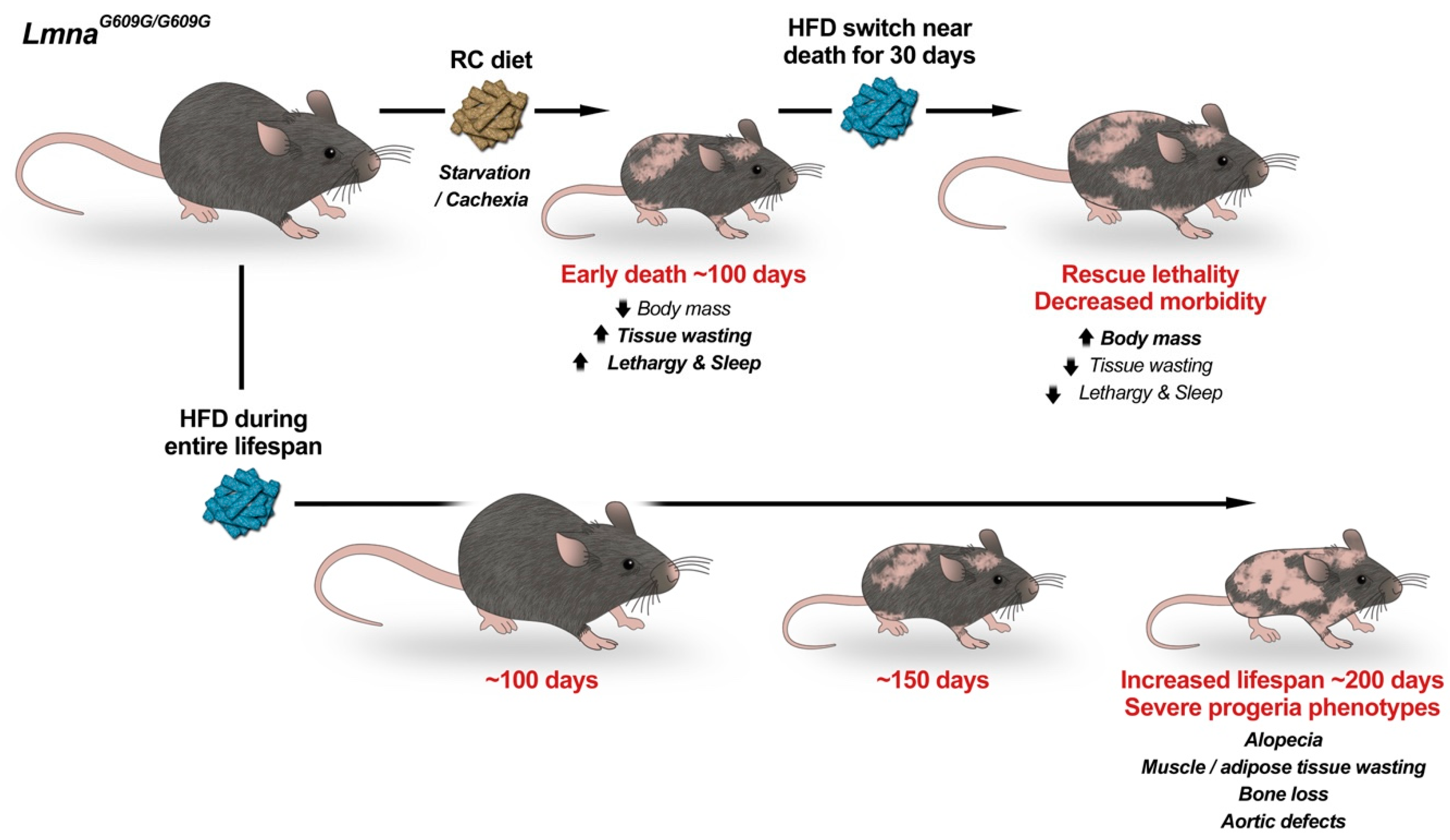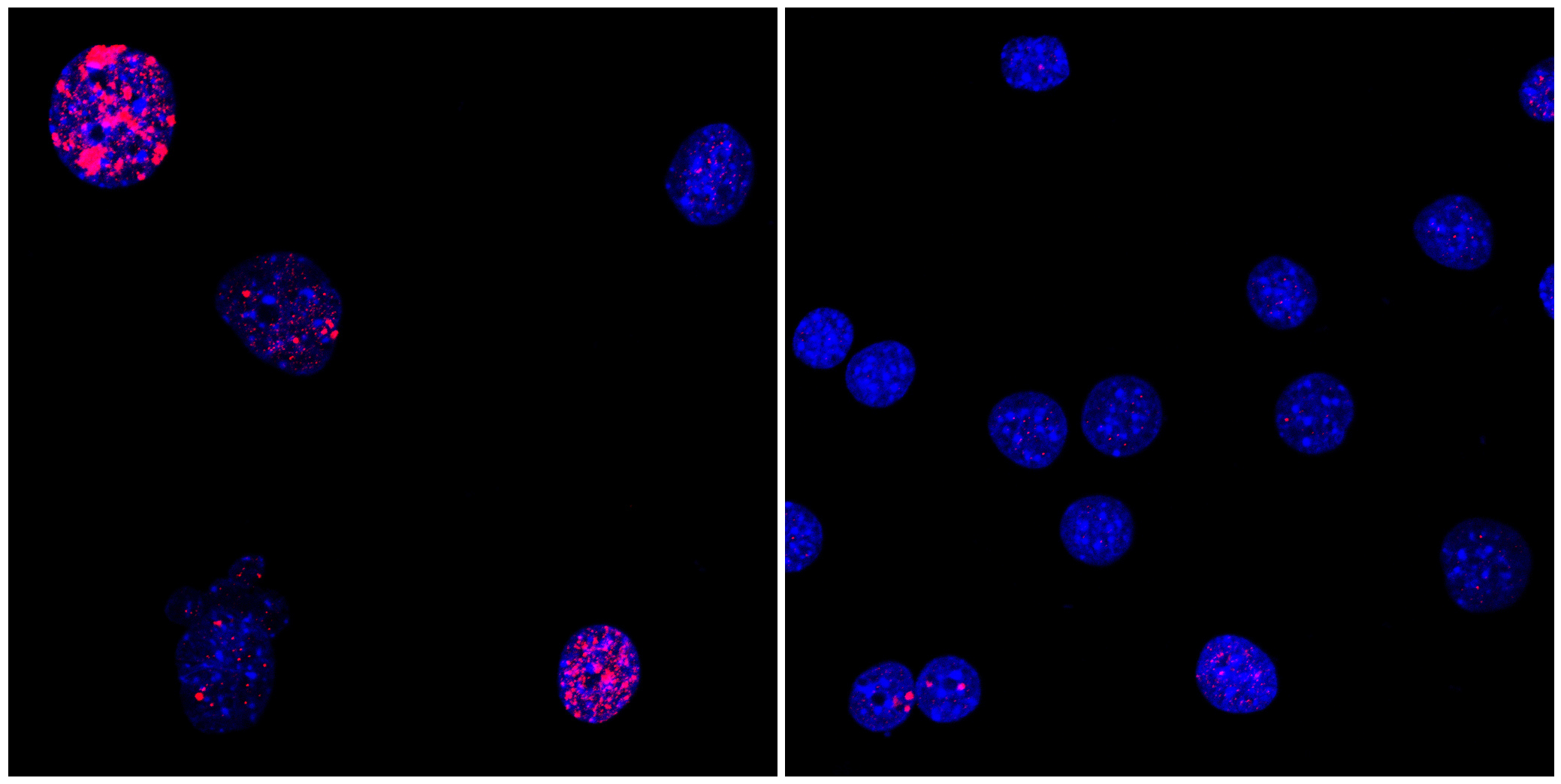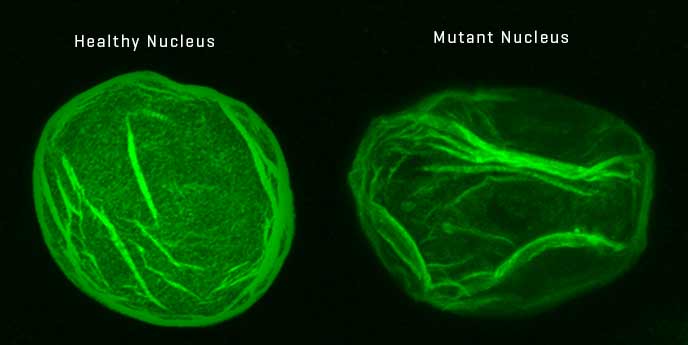Progeria And Cell Division
In patients with progeria the cell nucleus has dramatically aberrant morphology bottom right rather than the uniform shape typically found in healthy individuals top right. When telomeres reach a critical length cells either stop dividing.
 An Interesting Summary Of Progeria
An Interesting Summary Of Progeria
Progeria infantilis or Hutchinson-Gilford syndrome is one of the most remarkable laminopathies.

Progeria and cell division. In skin ACD can be assessed by the polarity of basal epidermal cells during division Lechler and Fuchs 2005. Hutchinson-Gilford progeria syndrome HGPS is a rare genetic disorder characterized by dramatic premature aging. And serve to ensure genomic stability during cell division.
Telomeres and telomerase have been investigated not only in cancer development but also in their role of cellular senescence in mitotic cells Smith et al 2013. The familial occurrence underlines the thesis that progeria is an autosomal-recessive disorder. Hutchinson-Gilford progeria syndrome HGPS is a progressive genetic disorder that causes rapid and premature aging in children.
Hutchinson-Gilford Progeria Syndrome HGPS. Results First we verified that cytoplasmic structures similar to those seen in GFP-LAD50progerin transfected HeLa cells 5 were present in HGPS patient fibroblasts. The mutation is usually sporadic and it is during the cell division in a newly conceived zygote or in the gametes of one of the parents.
Children with progeria usually develop the first. Severe cardiovascular complications usually develop by puberty resulting in death. Here we provide further insights into the composition of these structures and the impact of LAD50progerin on cell division nuclear assembly and the cell cycle.
HutchinsonGilford progeria syndrome HGPS or progeria is typically caused by a dominant-negative CG-to-TA mutation c1824 CT. ICMT is involved in modifying the. Epidermal stem cells shift toward symmetric cell division as progerin accumulates Skin development occurs through stratification of the epidermis and is partly mediated by asymmetric cell division.
This treatment delayed the deterioration of the cells and stimulated cell division and growth. Importantly when applied to healthy human cells and mouse cells that lacked the target ICMT protein. One of these children had died previous to this study.
Scientists have identified a potential new treatment approach for Hutchinson-Gilford progeria syndrome HGPS a progressive genetic disorder that causes rapid and premature aging in children. The examination of the cultured skin fibroblasts from the younger child showed a clear decrease in cell growth. Consequently telomeres from elderly donors are much shorter that those from young donors.
On the other hand. The findings in mice published in eLife show that blocking a protein called ICMT can improve the condition of affected cells without reducing cell division and growth. The mutation is usually sporadic and it is during the cell division in a newly conceived zygote or in the gametes of one of the parents.
Progeroid syndromes are a group of diseases with premature aging. In patients with progeria the cell nucleus has dramatically. Progeria is a specific type of progeroid syndrome called Hutchinson-Gilford syndrome.
The disease is caused by progerin a mutant protein that accumulates between the membranes that surround the cell nucleus leading to damage that makes cells slow down their growth and die prematurely. Patients born with progeria typically live to an age of mid-teens to early twenties. This report relates the case histories of two sisters who demonstrated the typical symptoms of progeria at birth.
Telomeres shorten with each cell division in vivo and in vitro due to the end replication problem as well as sporadic losses following damage or replication errors Lansdorp 2005. The corresponding enzyme telomerase is responsible for maintaining. PG608G in LMNA the gene that encodes nuclear lamin A.
Progeria is caused by a mutation on the LMNA gene. Classic HGPS is caused by a de novo point mutation in exon 11 residue 1824 C -- T of the LMNA gene activating a cryptic splice donor and resulting in a mutant lamin A LA protein termed progerinLADelta50 that lacks the normal cleavage site to remove a C-terminal farnesyl.
 Shared Molecular And Cellular Mechanisms Of Premature Ageing And Ageing Associated Diseases Nature Reviews Molecular Cell Biology
Shared Molecular And Cellular Mechanisms Of Premature Ageing And Ageing Associated Diseases Nature Reviews Molecular Cell Biology
 Cells Free Full Text Metabolic Dysfunction In Hutchinson Gilford Progeria Syndrome Html
Cells Free Full Text Metabolic Dysfunction In Hutchinson Gilford Progeria Syndrome Html
 Progeria An Overview Sciencedirect Topics
Progeria An Overview Sciencedirect Topics
 Inhibiting Farnesylation Of Progerin Prevents The Characteristic Nuclear Blebbing Of Hutchinson Gilford Progeria Syndrome Pnas
Inhibiting Farnesylation Of Progerin Prevents The Characteristic Nuclear Blebbing Of Hutchinson Gilford Progeria Syndrome Pnas
 The Disorder That Makes One Age 7 Times Faster Hutchinson Gilford Progeria Syndrome And Its Recent Advances Science Repository Open Access Journals
The Disorder That Makes One Age 7 Times Faster Hutchinson Gilford Progeria Syndrome And Its Recent Advances Science Repository Open Access Journals
Https Www Genome Gov Pages Research Dir Progeria Pnas Collins Erdos Pdf
 Progeria 101 Faq The Progeria Research Foundation
Progeria 101 Faq The Progeria Research Foundation
 Progeria A Paradigm For Translational Medicine Cell
Progeria A Paradigm For Translational Medicine Cell
 Genetics Of Progeria And Aging Sciencedirect
Genetics Of Progeria And Aging Sciencedirect
 Reprogramming Surge Resets Biological Clock In Animals
Reprogramming Surge Resets Biological Clock In Animals
 Pdf Progeria And Accelerated Cardiovascular Aging
Pdf Progeria And Accelerated Cardiovascular Aging
 First Ever Drug Trial Reverses Some Signs Of Aging In Progeria Boston Children S Discoveries
First Ever Drug Trial Reverses Some Signs Of Aging In Progeria Boston Children S Discoveries
 Figure 3 Diseases Associated With Specific Cell Organelles Cell Organelles Organelles Plasma Membrane
Figure 3 Diseases Associated With Specific Cell Organelles Cell Organelles Organelles Plasma Membrane
 Hutchinson Gilford Progeria Syndrome Review Of The Phenotype Hennekam 2006 American Journal Of Medical Genetics Part A Wiley Online Library
Hutchinson Gilford Progeria Syndrome Review Of The Phenotype Hennekam 2006 American Journal Of Medical Genetics Part A Wiley Online Library
 Progeria An Overview Sciencedirect Topics
Progeria An Overview Sciencedirect Topics
 Premature Aging Syndromes From Patients To Mechanism Journal Of Dermatological Science
Premature Aging Syndromes From Patients To Mechanism Journal Of Dermatological Science
 Study Reveals How Cells Nuclei Keep Their Shape
Study Reveals How Cells Nuclei Keep Their Shape
 Hutchinson Gilford Progeria Syndrome Britt S Biochemistry Blog Hgps
Hutchinson Gilford Progeria Syndrome Britt S Biochemistry Blog Hgps
